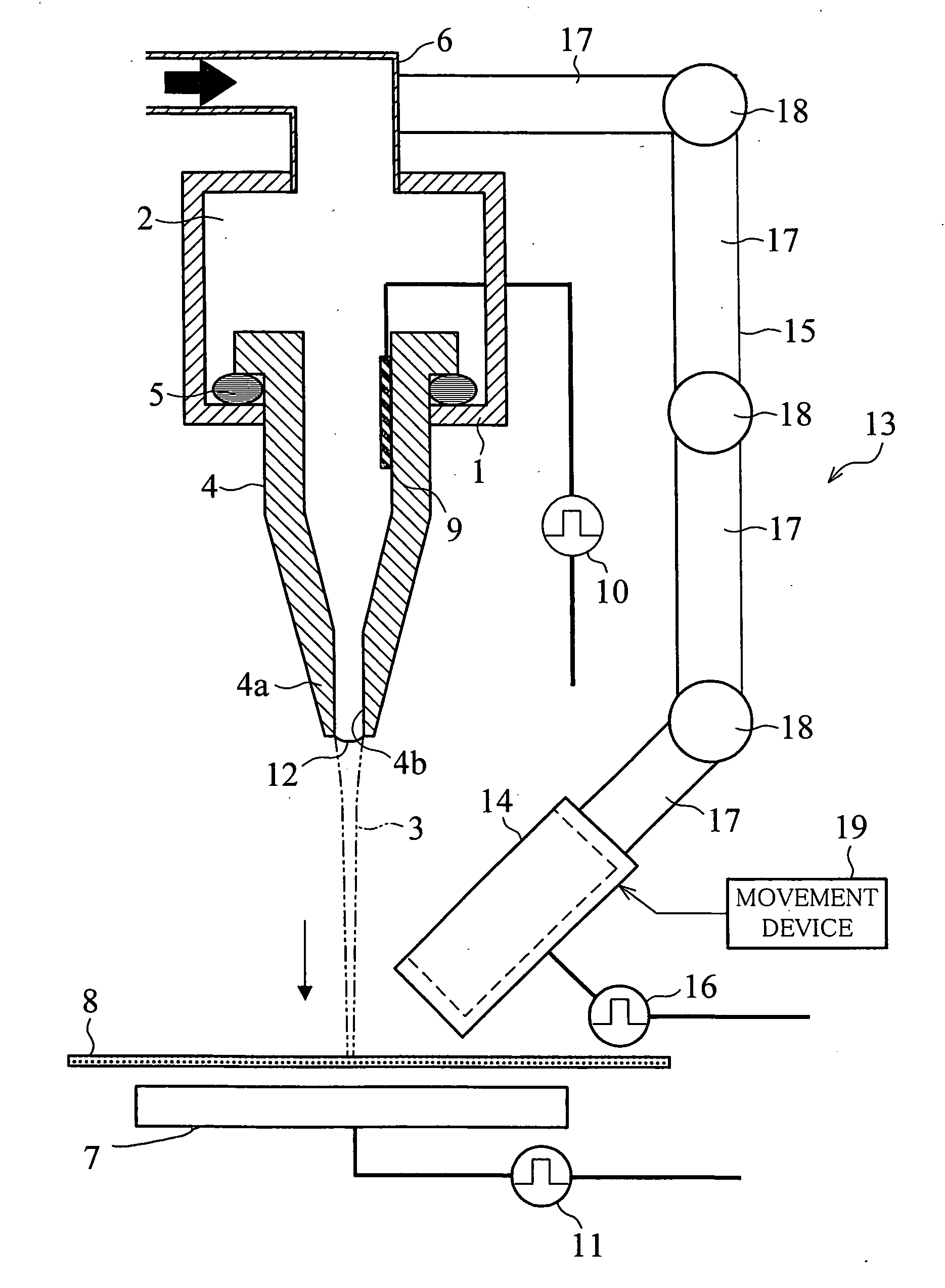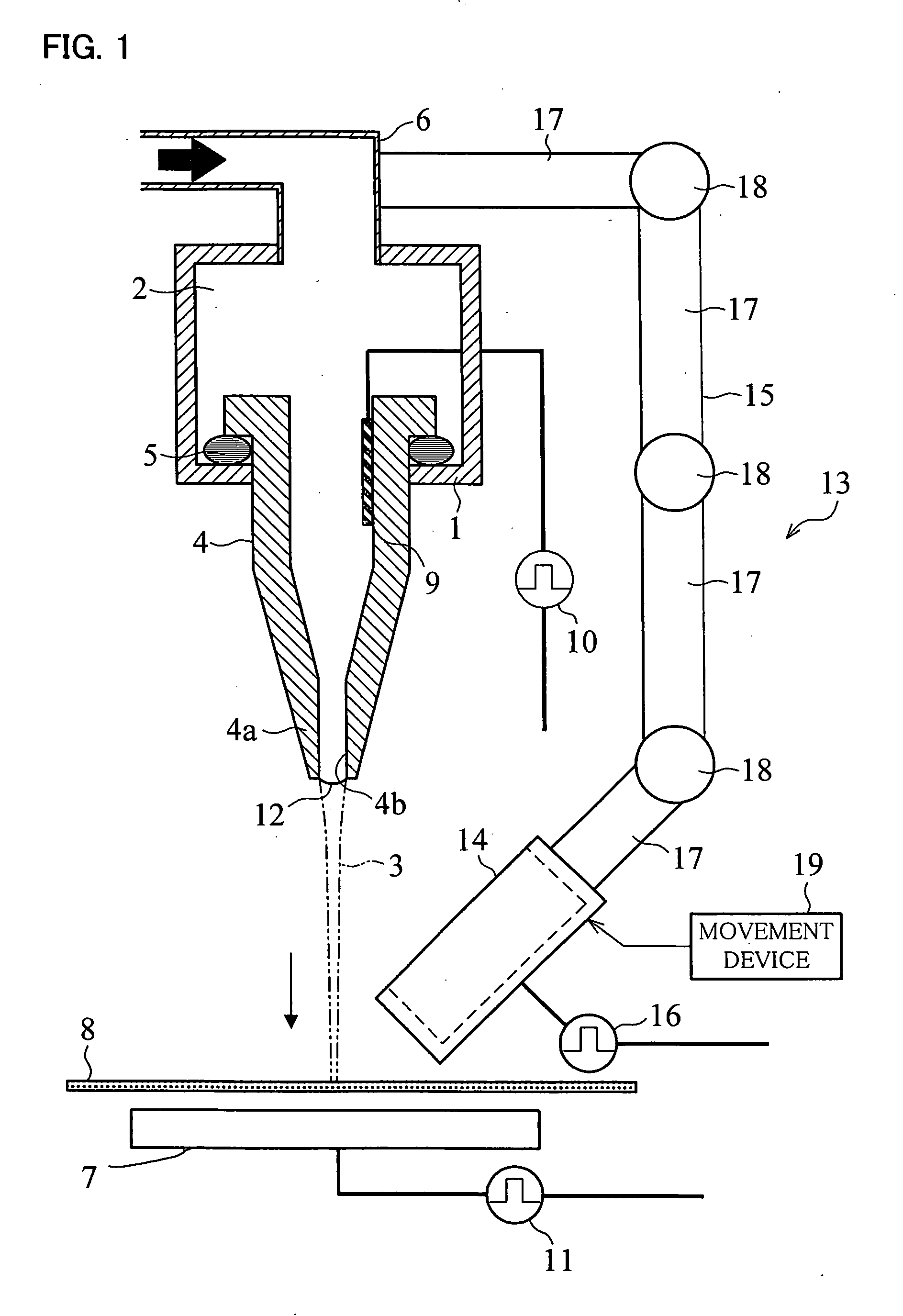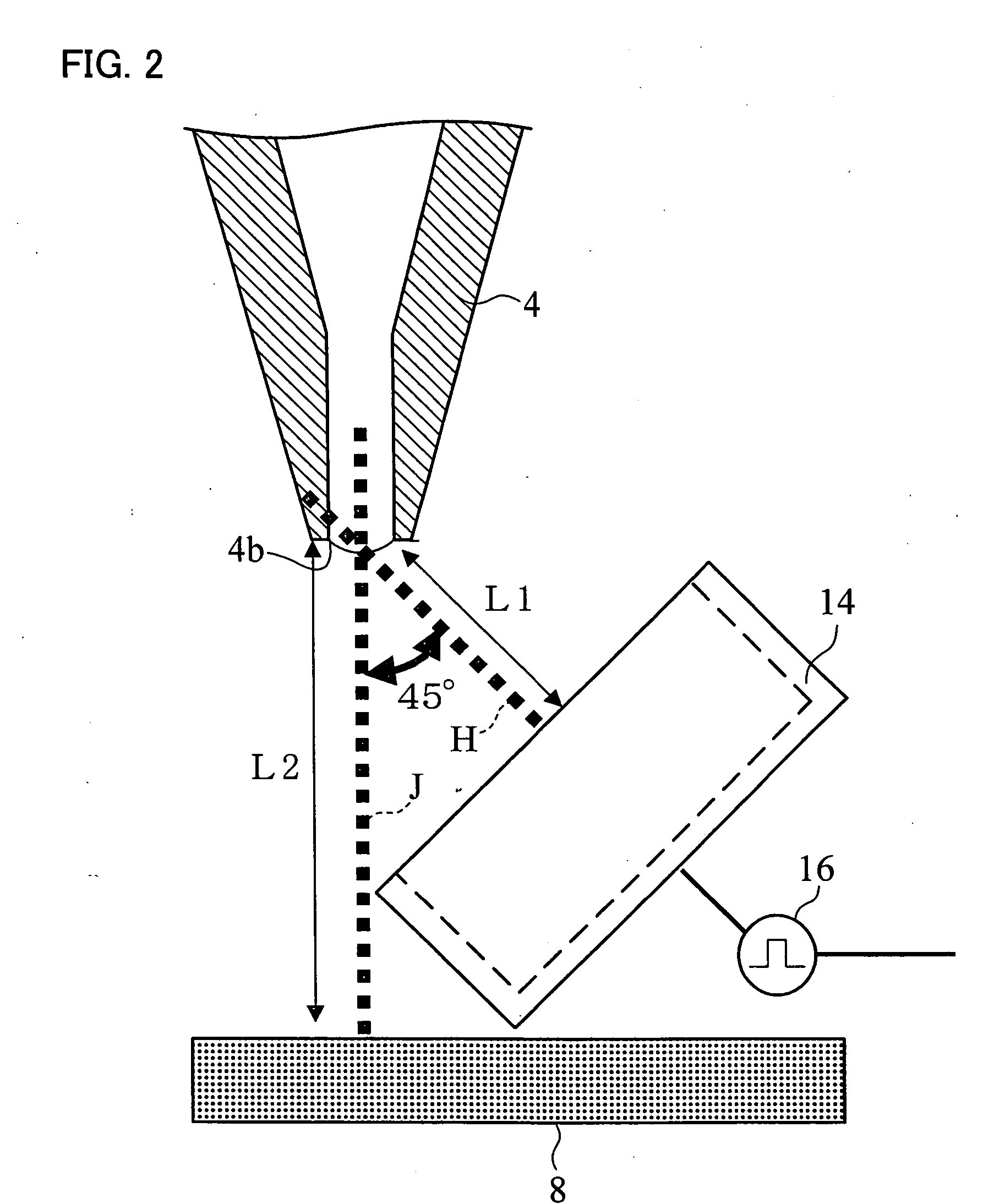Electrostatic attraction fluid ejecting method and apparatus
a technology of electrostatic attraction and ejecting apparatus, which is applied in the direction of instruments, printing, data recording, etc., can solve the problems of low positioning accuracy of droplets, droplets may not be able to reach, etc., and achieve the freedom of use of electrostatic attraction fluid ejecting apparatus, and high accuracy of drawing operation.
- Summary
- Abstract
- Description
- Claims
- Application Information
AI Technical Summary
Benefits of technology
Problems solved by technology
Method used
Image
Examples
embodiment 1
[0165] The following will explain one embodiment of the present invention. Note that the present embodiment will explain an electrostatic attraction ink jet apparatus as an electrostatic attraction fluid ejecting apparatus which uses ink as a fluid.
[0166]FIG. 1 is a diagram showing a schematic configuration of an ink jet apparatus of one embodiment of the present invention. As shown in FIG. 1, the ink jet apparatus includes a nozzle 4 for ejecting ink 2 that is a fluid stored in an ink chamber 1. The nozzle 4 is attached to the ink chamber 1 via a packing 5. With this, an attached portion of the nozzle 4 and the ink chamber 1 is sealed so that the ink 2 in the ink chamber 1 does not leak outwardly from this attached portion.
[0167] Moreover, the shape of the nozzle 4 is such that the internal diameter of the nozzle 4 is reduced in size toward the opposite side of the attached portion of the ink chamber 1, that is, toward a top portion 4a that is an ink ejection side. The internal d...
embodiment 2
[0229] The following will explain another embodiment of the present invention in reference to the figures. Note that explanations of the same members as the above embodiment are omitted here.
[0230] Instead of the ink catching portion 14, an ink jet apparatus of the present embodiment includes an ink catching portion 31 shown in FIGS. 6(a) and 6(b). FIG. 6(a) is a plan view of the ink catching portion 31, and FIG. 6(b) is a longitudinal sectional view of the ink catching portion 31.
[0231] The external form and size of the ink catching portion 31 is substantially the same as, for example, those of the ink catching portion 14. The ink catching portion 31 includes, for example, a container portion 32 that is in the form of a cylindrical container, and an attraction electrode portion 33. The attraction electrode portion 33 is connected with the process control portion 16.
[0232] The container portion 32 is made of a low dielectric material, such as organic resin, glass, or silica. The ...
embodiment 3
[0236] The following will explain still another embodiment of the present invention in reference to the figures. Note that explanations of the same members as the above embodiments are omitted here.
[0237] Instead of the ink catching portion 14, an ink jet apparatus of the present embodiment includes an ink catching portion 35 shown in FIGS. 7(a) and 7(b). FIG. 7(a) is a plan view of the ink catching portion 35, and FIG. 7(b) is a longitudinal sectional view of the ink catching portion 35. FIG. 8 is a longitudinal sectional view showing another example of a configuration of the ink catching portion 35.
[0238] The ink catching portion 35 includes the container portion 32 and attraction electrode portion 33 which are similar to those in the ink catching portion 31, and the container portion 32 here includes therein an absorber 36 made of an insulating material. Note that the attraction electrode portion 33 is connected with the process control portion 16.
[0239] The absorber 36 is so ...
PUM
 Login to View More
Login to View More Abstract
Description
Claims
Application Information
 Login to View More
Login to View More - R&D
- Intellectual Property
- Life Sciences
- Materials
- Tech Scout
- Unparalleled Data Quality
- Higher Quality Content
- 60% Fewer Hallucinations
Browse by: Latest US Patents, China's latest patents, Technical Efficacy Thesaurus, Application Domain, Technology Topic, Popular Technical Reports.
© 2025 PatSnap. All rights reserved.Legal|Privacy policy|Modern Slavery Act Transparency Statement|Sitemap|About US| Contact US: help@patsnap.com



